
Inclusion means to appreciate and value human differences and variety of lifestyles in a rich and diversified environment that promotes a sense of belonging and where everyone feels respected and valued. In an inclusive community every member should feel safe, respected, and comfortable in being her / himself and express their identity. Inclusive communities create a welcoming environment, so that everyone’s skills, creativity and innovation potential are recognized, cultivated and routinely utilized.
An inclusive community brings different cultural perspectives together in many contexts. For C3Places public spaces are the place where each person shares a sense of belonging with other members of the community. Therefore, appropriate spaces should be provided in order to generate mutual enjoyment and enhance citizens ’cooperation and also to redress policies and practices that perpetuate the harmful effects of discrimination and segregation.
In the digital era technologies are ever-present, so that we dare to speak about digital communities, inspired in Kenna & Maksymiuk (2019) who discuss some contrasting analyzes of the socio-spatial practices and impacts that are resulting from the uptake of new technologies in urban public spaces. Even a declining significance of public spaces in the digital era was predicted, a fact that the different examples addressed in Smaniotto et al (2019) have been proven wrong. ICT have potential to generate and increase social inequalities, as well as to offer new opportunities for encountering ‘others’ in the city. The design and structure of technological solutions can give impetus to the purposeful development towards community common good.
However, social values of the citizens acting in a collective environment have to be aligned or coordinated. As Skarzauskiene et al. (2015) warns, if technological decisions are implemented without scientific reasoning in an immature environment, these technological solutions can accelerate negative aspects of ICT and distance even more from the desirable goal of an inclusive community.
Author: R. Pizzi The platform was created by the Department of Computer Science of the dell’Università degli Studi di Milano of the as part of the C3Places European Project, which aims to develop strategies and tools to increase the quality of open public spaces through the information and communication technologies. This platform aims to create a community of students, teachers and citizens who attend the Città Studi Campus and its open spaces. On this web site you can ask, receive and yield information on the various places of interest scattered around the area simply by registering. Entering the dedicated pages it will be possible to interact with the registered members that share the same interests. In the groups section you will be able to communicate with the registered members (Figure 1). The group page can also be reached by scanning the QR code on the plate affixed in proximity to the point of interest (Figures 2 and 3). Figure 1: Social Campus view of the members page and of a chat between members. Author: R. Pizzi The presentation at the link describes the idea developed by the UNIMI team: a vibrant new way to create a community that could really communicate and help and grow not only virtually but also in presence *by means* of technology. Urban open space can easily become center of shared services and cultural events and opportunities and knowledge (Figure 1). The availability of public hot spots in public places can be seen as a social service, where digital infrastructures may become a way for the supply of public services, ideas, creativity, opportunities for co-creation and collective cultural and social interchange, promoting sustainability, responsibility and knowledge of nature, the city and citizenship in its cultural diversity. University of Milan main task in C3Places project was the development of a co-creation platform providing a scientifically validated framework for citizens’ interaction in and with public spaces, leveraging on their diversity potential of co-creation. A social network built around points of interest of public open spaces, where people can exchange usefule information, moods, requests, ideas. A complete example has been developed and experiment, yield the novel digital tool to students of the Campus, open also to the citizens living in the area. Figure 1: View of the “Città Studi” area. Authors: R. Pizzi, A. Merletti De Palo In the last decade Information and Communication Technologies (ICT) have become an important tool for socialization. However, living public open spaces firsthand remains fundamental for the development of the cultural identity of a community. ICT allows to develop strategies and tools to increase the quality of public open spaces, positively influencing the co-participatory creation and the effects of social cohesion (Figure 1). Figure 1: The university area “Città Studi” where the Social Campus points of interest are located. As part of a European research project called C3Places, we intend to generate knowledge and knowhow for a co-creation approach to be used to combine the use of ICT and the studies on cooperation with the essential functions and new potential of the public open spaces (Figures 2 and 3). We explored the new dynamics of the open spaces as a value-added service for the community, paying attention to the parties interested, to the local context and to the different social groups. Figure 2: App interface: services and contacts of the private charging points. Figure 3: The private charging points are geolocalized. Co-Creazione partecipativa e Sostenibilità Urbana: il Ruolo della Cooperazione nell’Era dell’ICT 2018 / R. Pizzi, A. Merletti De Palo – In: Città Sostenibili / [a cura di] C. Fiamingo, V. Bini, A. Dal Borgo. – Prima edizione. – Broni : Altravista, 2018 Dec. – ISBN 9788899688400. Authors: Vita Žlender , Ina Šuklje Erjavec, Barbara Goličnik Marušić This research aimed to explore information and communication technologies (ICT) types to support co-creation activities in public open spaces (POS) at different stages of the co-creation process. We conducted state-of-the-art research on the methods, best practices, obstacles and potential of ICT tools and co-creation activities to ease the interaction between stakeholders engaged in the process. Based on those findings, we proposed an ICT tools selection framework. Four living labs were analysed to better understand the practical side of digitally aided co-creation. We conclude by exposing challenges and suggest ways to move forward toward genuinely digitally supported co-creation of the POS. Vita Žlender , Ina Šuklje Erjavec & Barbara Goličnik Marušić (2020): Digitally Supported Co-creation within Public Open Space Development Process: Experiences from the C3Places Project and Potential for Future Urban Practice, Planning Practice & Research, DOI: 10.1080/02697459.2020.1829286 Authors: Monika Mačiulienė Increasingly digital communication, social media and computing networks put the end-users at the center of innovation processes, thus shifting the emphasis from technologies to people. In the private sector, this shift to user-centricity has been conceptualized under such approaches as Service-Dominant Logic and Open Innovation 2.0. Public sector conceptualizes the change through the New Public Governance and Open Government paradigms and suggest that the public value is no longer created by the governments alone but in collaboration between the public entities, private sector, civil society organizations and citizens. While traditional approaches to public engagement and governmental transformations remain relevant, this article focuses on the growing potential of networked urban communities to solve the social problems. It expands the co-creation research field and suggests a typology discerning co-creation patterns when enhancing the public spaces with a community-wide participation with the use of creative, innovative and cooperative Information and Communication Technologies’ applications. The sample for web-based monitoring consists of 10 digital applications linked with design and improvement of public spaces in Vilnius, Lithuania. The proposed typology framework gives an overview of the state-of-art in the interaction between people, places and technology. The research helps to discern how different technological, organizational and other social factors influence and shape the patterns of co-creative initiatives. Mačiulienė, M. (2018). Mapping Digital Co-Creation for Urban Communities and Public Places. Systems, 6(2), 14. doi:10.3390/systems6020014 Authors: Joana Batista, Inês Almeida, Carlos Smaniotto Costa, Marluci Menezes C3Places Lisbon Living Lab allowed to reflect on the potential and bottlenecks in digital co-creation with teenagers. The labs revealed the importance, of clear messages, goals and expectations, shared from the beginning. Such messages have to encompass what is going to happen, why is it happening, when each task has to be performed, which results are expected and what are the benefits for participants. In Lisbon, the labs revealed teenagers’ have a weak urban literacy and low spatial representation skills, and difficulties in identifying own needs and expressing ideas for public spaces, but the theme sparks interest in most of them and the interactive activities provide a forum for learning about urban space and share experience of teenagers use of space and needs. For this reason is important to assess the knowledge, abilities and motivations of the target participants, and harness their full potential to actively participate in co-creation of public open spaces. To assess the success rate and overall satisfaction with the labs, a short questionnaire was distributed at the end of the last session asking students to indicate the perceived learning effect. The results flutuate between a high satisfaction and a disatisfaction, in line with the general observation made during all sessions; while a group of students showed interest and conducted lively the discussion, another small group remained apart, even not reacting to a direct request to express their ideas or opinions. While in the questions related to personal experience with collaboration and exchange of ideas, the agreement with statements was low, the ones related to learning effect by taking part of the workshops the agreement was higher. This can be analysed as a positive benefit for increased knowledge gained by this type of participative methodology. In this respect, it is noted that the living labs were inserted in the daily school activities, and the school board selected the classes that participated in the two phases. The willingness and readiness to get involve in digital co-creation may be different than when students can choose on their own to participate. The second phase of labs with teenagers tested the potential of using digital devices in co-creation of public open spaces. Tablets were provided for the participants and facilitators recommended the use of digital tools for collection and discussion of ideas and general group work. The use of this devices may be benefitial to allow for more interactivity in co-creation. For digital co-creation, devices and tools should be provided and integrated in the proccess, efficiently and logically. In Lisbon, results highlight a important role of digital co-creation to increase the awareness on placemaking and provide opportunities for teenagers (and other groups) to discuss different needs on public spaces. That discussion is a crucial one in urban planning, since public spaces are common goods and everyone should be able and encouraged to use them and share them with others. Authors: Joana Batista, Inês Almeida, Carlos Smaniotto Costa, Marluci Menezes C3Places in Lisbon implemented living labs on urban planning and design targeting teenagers in Alvalade neighbourhood. The labs were developed for co-creative and collaborative practice, exploring opportunities for a direct involvement of teenagers in placemaking, providing a platform for learning and free expression of values and ideas about and for urban fabric. The methodology encompassed different tools, such as thematic workshops, exploratory site visits in the neighbourhood, discussions and debates sessions and questionnaires, focused on teenagers’ practices, uses and needs on public open spaces. The living labs were implemented in two phases. A pilot phase was organised between February and May 2018 with two 10th grade classes (N=49 students, aged 15 to 18), consisting in total of 24 hours intervention per class, with both indoor and outdoor activities, aimed at discussing the city and its production. A methodological decision was made by the researchers on which data should be analysed in more depth. Materials as questionnaires and the facilitators observational notes, as direct tools for data collection, were prioritized. Questionnaires had closed questions, analysed quantitively, and open questions, analysed through thematic analysis (Braun & Clarke, 2006). Other data resulting from materials that provided support for the activities and exercises complemented and reinforced these analyses. The second phase, a week-long lab was organised in May 2019 with two classes of the first year of professional training education (N=20, aged 16 to 18). The students developed and justified design proposals for the space in front of their school. The labs were organised in four sessions of 1,5 hour each with an emphasis on group work and on the use of digital tools (Padlet, image bank, presentation programmes and Google Maps). The facilitators observational notes, a questionnaire to assess importance of co-creation and the teenagers’ proposals presented by teenagers analysed. Living labs were complemented with other methods of data collection, as space observations and interviews with experts. Space observations enabled to obtain an overview of the whole neighbourhood, as well as a more focused outline on public spaces used by teenagers. Two sets observations were conducted, undertaken at different periods of the day and different days of the week. Descriptive notes and an image library enriched the field work. The first set of observations consisted of mapping out the local public spaces. In the second set, the Marquês de Soveral Street, where the school is located, and well known and used space by the teenage students, was selected for detailed observations (during a twenty-day period). Data were collected with the aid of two distinctive observation grids. Semi-structured in-depth interviews were conducted with the four planning experts working with public space issues at the Junta de Freguesia de Alvalade (parish council). The quality of the analysis is secured through several steps, such as: familiarization with the data; generating initial codes which were then aggregated into potential themes; initial themes review, and identifying final themes (Braun & Clarke, 2006). References: Authors: Inês Almeida, Joana Batista, Carlos Smaniotto Costa, Marluci Menezes Developing and testing of a mobile application to support research activities is one of the goals of the C3Places Project. The C3Places application is designed to enable researchers to address questions related to the use of public spaces via digital technology. A relevant aspect of the digital and mobile technologies lies in their possibility to enhance communication with prospective users, hence enabling possibilities for creative participation in placemaking and co-creation. The C3Places application consists of two main components: a web service (web platform) and the smartphone application (app) and is enabled to be used anywhere in the world.It allows researchers to collect evidence base and demonstrate the social values of public spaces – backed by users’ opinion and views. Also, by providing evidence and demonstrating that public space is having a positive societal impact can increase the enthusiasm for more inclusive and responsive public spaces. By collecting such data, the C3Places App contributes to better explore and more precisely research on public space practices, as well integrate the use and point of view of several users on different spaces. Another interesting feature lies in the possibility to collect the weather conditions automatically, therefore researchers can also reflect on how weather conditions affect (or not) the usage of public open spaces. Finally, considering that it is up to the researcher to create the questions or the photo questionnaire, the possibilities are infinite and can be addressed directly to each research topic that is being carried out. So, the C3Places app allows scholars and researchers to make more specific or broader public open space research and, since it runs in Android operative system, the range is quite extensive. The use of the C3Places App is free and can be requested at c3places.coordination@ulusofona.pt. The manual for preparing a research subject with the help of the C3Places App can be downloaded here.Social Campus
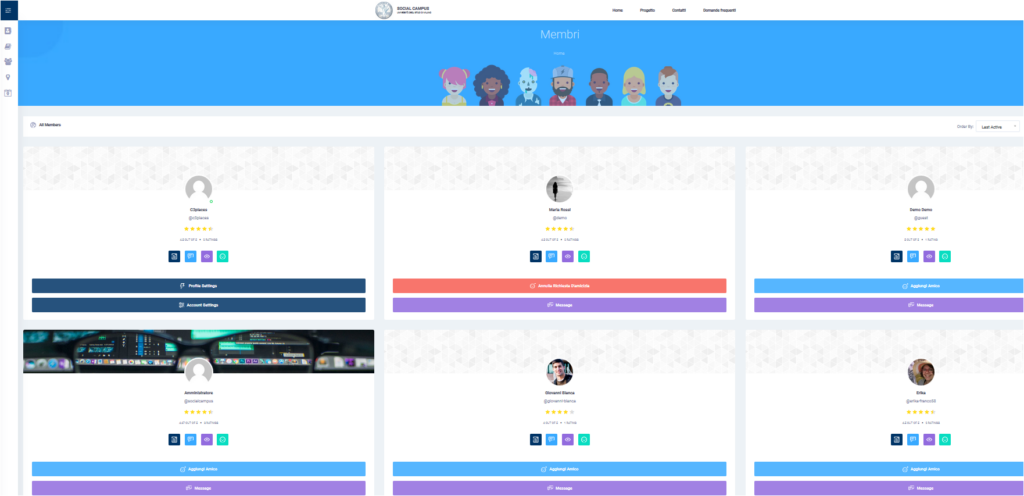



Figure 3: Social Campus: an example of QR code tag.The University of Milan contribution to the C3Places Project
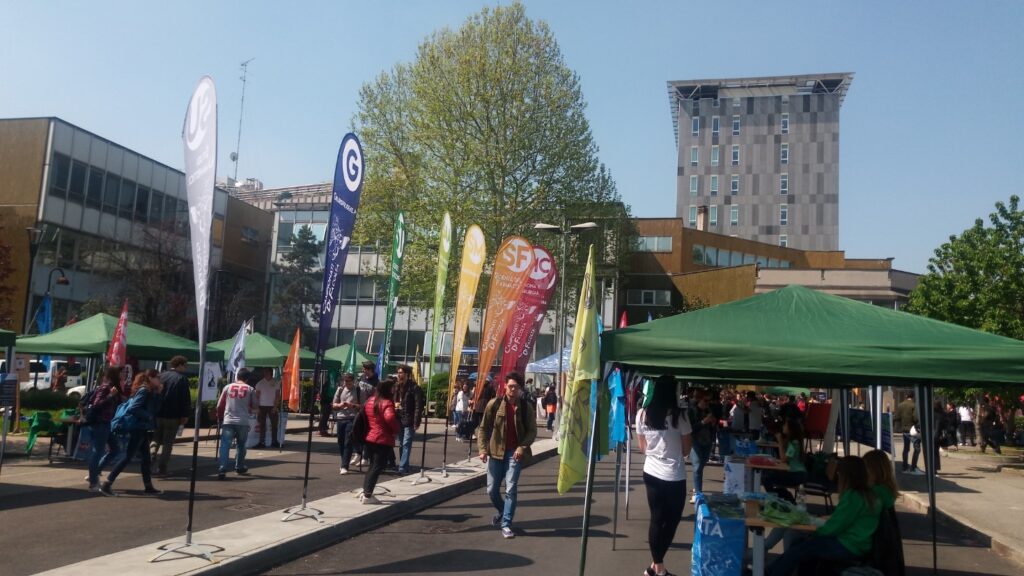
Participatory co-creation and urban sustainability: the role of cooperation in the ICT era
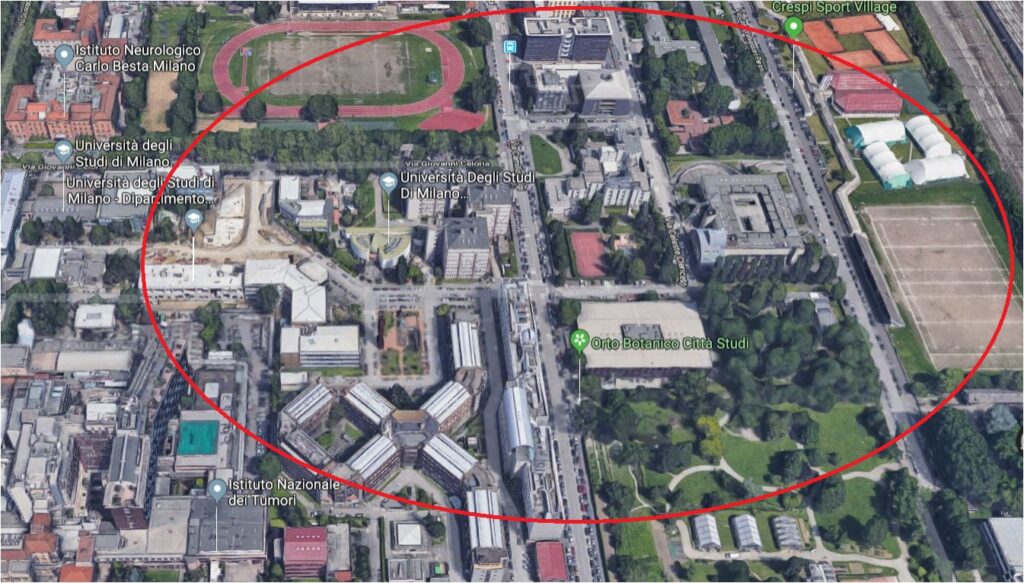
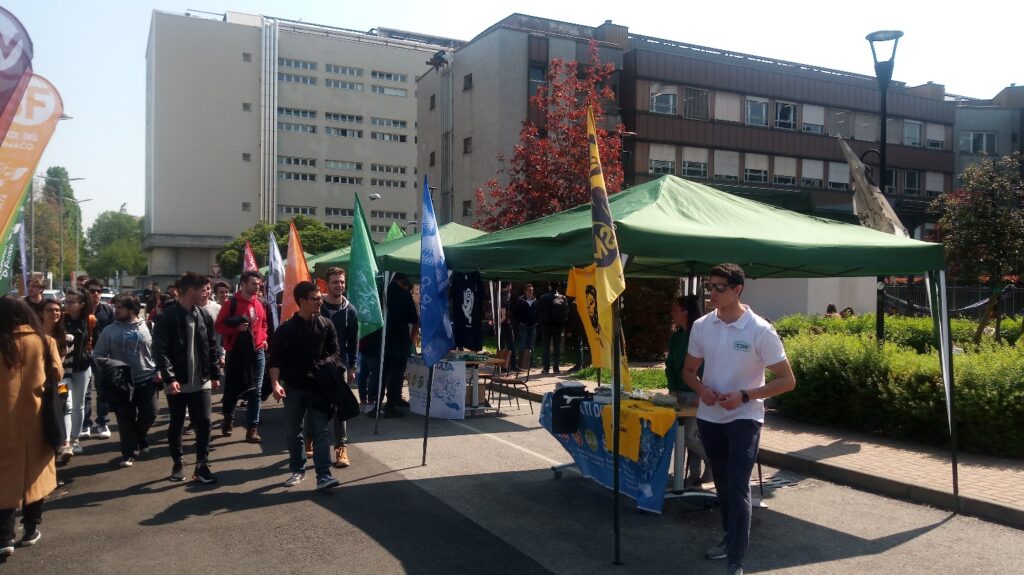
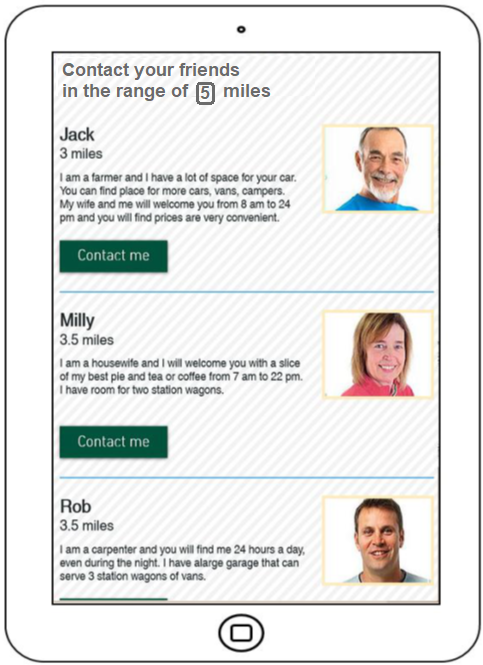
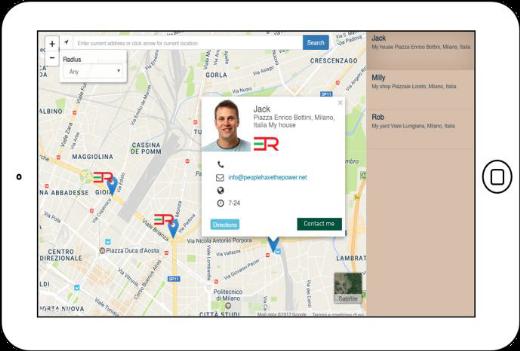
Digitally Supported Co-creation within Public Open Space Development Process. Experiences from the C3Places Project and Potential for Future Urban Practice
Mapping Digital Co-Creation for Urban Communities and Public Places
Potentials and bottlenecks in digital co-creation with teenagers
C3Places Lisbon
The C3Places mobile application
